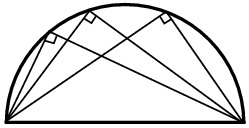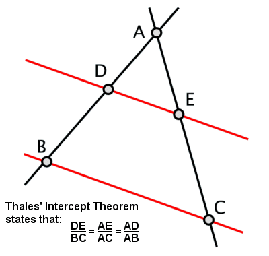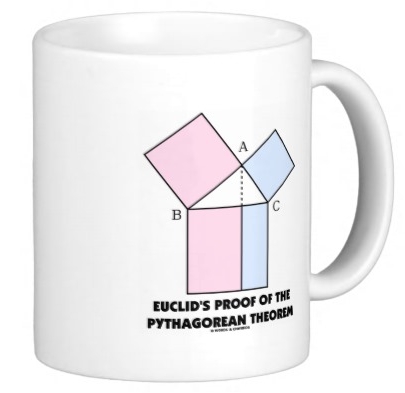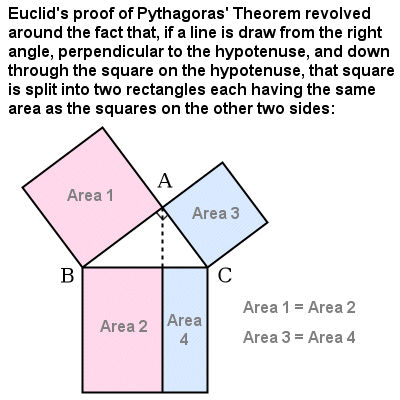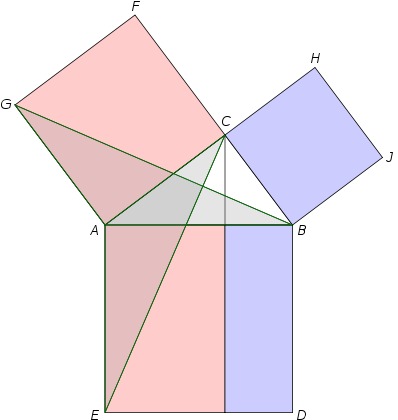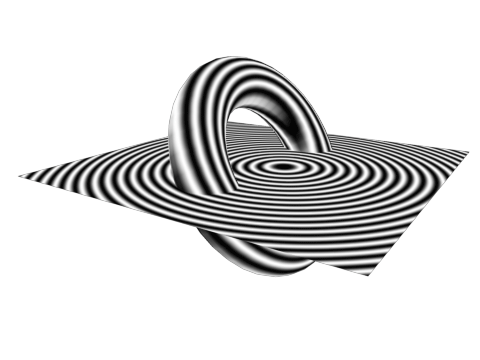|
Historical/Chronological Overviews :
-
William Dunham,
Journey Through Genius,
1990, Penguin Books, 300 pages
A march through math history --- Hippocrates, Euclid, Archimedes,
Heron, Cardano, Newton, Bernoulli's, Euler, Cantor
-
William Dunham,
The Calculus Gallery: Masterpieces from Newton to Lebesgue,
2005, Princeton University Press, 236 pages
14 chapters named after mathematicians and ordered chronologically:
Newton, Leibniz, the Bernoullis, Euler, First Interlude (a logical crisis
at the end of the 18th century), Cauchy, Riemann, Liouville, Weierstrass,
Second Interlude (questions on discontinuous functions and integrability
and differentiability), Cantor, Volterra, Baire, Lebesgue
-
Amir Aczel,
A Strange Wilderness: The Lives of the Great Mathematicians,
2011, Sterling, 284 pages
Lives in chronological sections: Greece, the East, Renaissance/Italy,
Enlightenment/Calculus, French Upheaval, Infinity
-
Robert Solomon,
The Little Book of Mathematical Principles, Theories, and Things,
2008, Metro Books, 224 pages
About one to two pages on about 140 different topics, chronologically,
including fractions, pi, Pythagorean theorem, regular polygons, Platonic solids,
golden ratio, trisecting the angle, doubling the cube, squaring the circle,
Zeno's paradoxes, conic sections, Euclid's Elements, Fundamental theorem of
Arithmetic, the Inifinity of Prime numbers, quadrature of the parabola,
the Sand Reckoner, trigonometry, negative numbers, the earth-centered universe,
zero, cubic equations, quartic equations, the sun-centered universe,
mathematical induction, falling bodies, logarithms, ..., the 7 millenium problems
-
Clifford Pickover,
The Math Book - 250 milestones in the history of mathematics,
2009, Sterling, 527 pages
Milestones from Pythagoras to the 57th dimension.
-
Alfred Posamentier and
Ingmar Lehmann,
Magnificent Mistakes in Mathematics,
2013, Prometheus Books, 296 pages
The 5 chapters: 'Noteworthy mistakes by famous mathematicians',
'Mistakes in arithmetic', 'Algebraic mistakes', 'Geometric mistakes',
'Mistakes in probability and statistics'
-
Michael Willers,
Algebra: the x and y of everyday math,
2009, Fall River Press, 176 pages
Chapters: 'Algebra: An Introduction', 'Algebra Basics', 'Ancient Greece',
'Egypt, India, and Persia', 'The Italian Connection',
'Post-Renaissance Europe', 'Money and Privacy'
-
Julian Havil,
The Irrationals: a story of the numbers you can't count on,
2012, Princeton University Press, 298 pages
Basically a chronological presentation over 11 chapters.
-
Ian Stewart,
In Pursuit of the Unknown: 17 equations that changed the world,
2012, Basic Books, 342 pages
The 17 equations are presented under the titles
'Pythagoras's theorem', 'Logarithms', 'Calculus',
'Newton's Law of Gravity', 'The square root of minus one', 'Euler's formula
for polyhedra', 'Normal distribution', 'Wave equation', 'Fourier transform',
'Navier-Stokes equation', 'Maxwell's equations', '2nd law of thermodynamics',
'Relativity', 'Schrodinger's equation', 'Information theory', 'Chaos theory',
'Black-Scholes equation'
-
Steven Hawking,
God Created the Integers: The Mathematical Breakthroughs that Changed History,
2007, Running Press, 1358 pages
An assembly of works from Euclid, Archimedes, Diophantus, Descartes, Newton, Euler,
Laplace, Fourier, Gauss, Cauchy, Lobachevsky, Bolyai, Galois, Boole, Riemann,
Weierstrass, Didekind, Cantor, Lebesgue, Godel, Turing
-
Tony Crilly,
50 Mathematical Ideas You Really Need to Know,
2007, Quercus Editions Ltd, 208 pages
Some of the 50 Sections: 'Zero', 'Number systems', 'Fractions',
'Squares and square roots', 'pi', 'e', 'Infinity', 'Imaginary numbers',
'Primes', ... , 'Calculus', 'Constructions', 'Triangles', 'Curves',
'Topology', 'Dimension', 'Fractals', 'Chaos', ... , 'Probablity', ... ,
'Distributions', 'The normal curve', ... , 'Matrices', 'Codes', ... ,
'Relativity', 'Fermat's last theorem', 'The Riemann hypothesis'
-
Tony Crilly,
The Big Questions - Mathematics,
2011, Metro Books, 208 pages
Some of the questions: 'How big is infinity?', 'Can we create an
unbreakable code?', 'Is there a formula for everything?',
'What shape is the universe?', 'Why are 3 dimensions not enough?',
'Is there anything left to solve?'
-
Morris Kline,
Mathematics: The Loss of Certainty,
1980, Oxford University Press, 366 pages
This book discusses how confidence in the solidity of mathematical proofs
has been shaken by various logical paradoxes that have been
encountered and by problems in achieving 'completeness' and 'consistency'
of axiom systems. The books draws on discoveries by Bertrand Russell
and Kurt Godel, as well as surprising discoveries by Weierstrass and
Cantor and many other mathematicians.
Fun with Math : (including puzzles)
-
Norbert Hermann,
The Beauty of Everyday Mathematics,
2012, Springer, 138 pages
Solutions to 12 problems explained ... the soda can problem,
the mirror problem, the leg problem, etc.
-
Marcus Weeks,
How Many Elephants in a Whale ... New Ways to Measure the World,
2010, Metro Books, 128 pages
Chaptes: Length and Distance, Area, Height and Depth, Weight Mass and Density,
Volume and Storage Capacity, Population, Time, Speed, Temperature,
Energy and Power, Sound
-
Richard
Elwes,
Mathematics without the Boring Bits,
2011, Metro Books, 223 pages
35 sections with titles like ' How to solve every equation there has ever been',
'How to square a circle', 'How to excel at Sudoku', 'How to unleash chaos',
'How to make a million on the stock market', 'How to visit a hundred cities
in one day', 'How to unknot your DNA', 'How to feel at home in 5 dimensions',
'How to bring down the internet', 'How to ask an unanswerable question',
'How to detect fraud', 'How to create an unbreakable code', 'How to win at roulette'
(Elwes has a web site at
richardelwes.co.uk.)
-
Ian Stewart,
Professor Stewart's Hoard of Mathematical Treasures,
2009, Basic Books, 339 pages
Contains more tha 120 'treasures', including 'Swallowing elephants',
'Hexaflexagons', 'The buttered cat paradox', 'A flexible polyhedron',
'The hairy ball theorem', 'The greedy algorithm', 'Alexander's horned sphere',
'Proof techniques', 'Sums that go on forever', 'Greek and Trojan asteroids',
'Monkeys agains evolution', 'When is a knot not knotted?',
'Beyond the 4th dimension', 'The largest number is 42',
'The future of mathematics' (humor)
-
Ian Stewart,
Professor Stewart's Cabinet of Mathematical Curiosities,
2009, Basic Books, 310 pages
More than 120 'curiosities', including 'Pop-up dodecahedron',
'What is pi?', 'Much ado about knotting', 'Ouroborean rings',
'A little-know Pythagorean curiosity', 'Space-filling curves',
'Pick's theorem', 'Langton's ant', 'The Goldbach conjecture',
'Euler's formula', 'All triangles are isoceles', 'Godel's theorems',
'Infinite wealth', 'The Kepler problem', 'The Milk Crate problem',
'Dragon curve'
-
Robert Banks,
Slicing Pizza, Racing Turtles, and further adventures in applied mathematics,
1999, Princeton University Press, 286 pages
26 chapters including 'Which major rivers flow uphill?', 'A brief look at
pi, e, and some other famous numbers', 'Great number sequences: Prime,
Fibonacci, and Hailstone', 'How to get anywhere in about 42 minutes'.
'How fast should you run in the rain?', 'How many people have ever lived?',
'Cartography: How to flatten spheres', 'Lengths, areas, and volumes of all
kinds of shapes'
-
Robert Banks,
Towing Icebergs, Falling Dominoes, and other adventures in applied mathematics,
1998, Princeton University Press, 328 pages
24 chapters including 'Alligator eggs and the federal debt', 'Towing and melting
enormous icebergs', 'How to calculate the economic energy of a nation',
'Gigantic numbers and extreme exponents', 'Jumping ropes and wind turbines',
'How to reduce the population with differential equations',
'Shot puts, basketballs, and water fountains', 'Water waves and falling dominoes',
'Something shocking about highway traffic', 'How fast can runners run?'
-
Ivan Moscovich,
The Monty Hall Problem and other Puzzles,
2004, Dover, 128 pages
Some contents: Inebriated Insect, Early Geometry, Non-Euclidean Geometry,
Taxicab Geometry, Cubic Cryptogram, Cycloid and cycling, Flea circus,
Island hopping, Golomb rulers, Ramsey theory, Eulerian paths, Traveling
salesman problem, Polar coordinates, Spherical coordinates, Fluid dynamics,
Ganymede circles, Magic arrows, To the max
-
Anany Levitin and Maria Levitin,
Algorithmic Puzzles,
2011, Oxford University Press, 257 pages
Some Chapters: 'General Strategies for Algorithm Design', 'Analysis Techniques',
'Easier Puzzles (1 to 50)', 'Puzzles of Medium Difficulty (51 to 110)',
'Harder Puzzles (111 to 150)', 'Hints', 'Solutions'
-
John J. Watkins,
Across the Board: the mathematics of chessboard problems,
2004, Princeton University Press, 257 pages
13 Chapters: 'Introduction', 'Knight's Tours', 'The Knight's Tour Problem',
'Magic Squares', 'The Torus and the Cylinder', 'The Klein Bottle and Other
Variations', 'Domination', 'Queens Domination', 'Domination on other surfaces',
'Independence', 'Other surfaces, other variations', 'Eulerian squares',
'Polyominoes'
Tough Problems :
-
Simon Singh,
Fermat's Enigma: The Epic Quest to Solve [Fermat's Claim],
1997, Anchor Books, 315 pages
The story of Andrew Wile's quest to prove Fermat's claim ---
no postive integer solutions to x^n + y^n = z^n for n > 2.
-
Keith Devlin,
The Millennium Problems: The Seven Greatest Unsolved Mathematical Puzzles of Our Time,
2002, Barnes and Noble, 237 pages
The 7 Problems: the Riemann Hypothesis, the Mass Gap Hypothesis, the P vs. NP problem,
the Navier-Stokes equation, the Poincare Conjecture, the Birch and Swinnerton-Dyer conjecture,
the Hodge conjecture
-
Ian Stewart,
Visions of Infinity: The Great Mathematical Problems,
2013, Basic Books, 340 pages
The great problems described include 'the Goldbach conjecture',
'squaring the circle', 'the 4 color problem', 'Kepler conjecture',
'Mordell conjecture', 'Fermat's last theorem', '3-body problem',
'Riemann hypothesis', 'Poincare conjecture', 'P/NP problem',
'Navier-Stokes equation', 'Mass Gap hypothesis', 'Birch-Swinnerton-Dyer
conjecture', 'Hodge conjecture'
-
Lance Fortnow,
The Golden Ticket: P, NP, and the Search for the Impossible,
2013, Princeton University Press, 176 pages
Some Chapters: 'P and NP', 'The Hardest Problems in NP', 'The Prehistory
of P versus NP', 'Dealing with Hardness', 'Proving P not equal NP', 'The Future'
Applications to Physics, Biology,
Computing, and other sciences :
-
Edward Frenkel,
Love and Math: The Heart of Hidden Reality,
2013, Basic Books, 292 pages
A story of the author's love of symmetry groups and how they
help predict sub-atomic structure
-
Robert P. Crease,
The Great Equations: Breakthroughs in Science from Pythagoras to Heisenberg,
2008, Norton and Company, 315 pages
The Equations: Pythagorean Theorem, Newton's 2nd Law of Motion, Newton's
Law of Universal Gravitation, Euler's Equation, The 2nd Law of Thermodynamics,
Maxwell's Equations, E = m c squared , Einstein's Equation for General Relativity,
Schrodinger's Equation, Heisenberg Uncertainty Principle
-
Ian Stewart,
The Mathematics of Life,
2011, Basic Books, 358 pages
How mathematics applies to biology, medicine, and molecules
-
Ernst Mach,
The Science of Mechanics,
1919, Barnes and Noble, 605 pages
A book from a Nobel physicist who influenced Lorenz and Einstein ---
the book discusses statics and dynamics
-
John MacCormick,
Nine Algorithms that Change the Future: Ingenious ideas that drive today's computers,
2012, Princeton University Press, 219 pages
Chapters includ 'Search Engine Indexing', 'Page Rank', 'Public Key Cryptography',
'Error Correcting Codes', 'Pattern Recognition', 'Data Compression',
'Databases: the quest for consistency', 'Digital Signatures', 'What is computable?'
-
Paul Nahin,
When Least is Best: How mathematicians discovered many clever ways to make things as
small (or as large) as possible,
2004, Princeton University Press, 372 pages
In seven chapters: 'Minimums, maximums derivatives, and computers',
'The first extremal problems', 'Medieval maximization and some modern twists',
'The forgotten war of Descartes and Fermat', 'Calculus steps forward, center stage',
'Beyond Calculus', 'The modern age begins'
-
Paul Nahin,
Chases and Escapes: the mathematics of pursuit and evasion,
2007, Princeton University Press, 250 pages
The 4 main chapters: 'The Classic Pursuit Problem', 'Pursuit of (mostly)
Maneuvering Targets', 'Cyclic Pursuit', 'Seven Classic Evasion Problems'
-
B. Jack Copeland,
Turing: Pioneer of the Information Age,
2012, Oxford University Press, 300 pages
Not much math in this book, but it gives a sense of the efforts
that were expended during World War II to break the Enigma
codes of the Germans. The bibliography might be more helpful
in getting information on the true nature of Turing's
contributions to mathematics and computer science.
-
James D. Watson,
DNA: The Secret of Life,
2004, Alfred A. Knopf, 446 pages
Not really a math book, but the first chapter gives a great
overview of molecular biology as known up to about 2004.
(Much combinatorial logic is involved in determining the sequence
of bases in DNA and RNA, although that logic and those algorithms
are not described in this book. This book would be good background
information for such a book.)
Geometry - 2D and 3D :
-
Miranda Lundy,
Daud Sutton,
Anthony Ashton, and
Jason Martineau,
Quadrivium: The Four Classical Liberal Arts of Number, Geometry, Music, and Cosmology,
2001-2011, Wooden Books, 409 pages
Six books (chapters): Sacred Number, Sacred Geometry, Platonic and Archimedean Solids,
Harmonograph, The Elements of Music, A Little Book of Coincidence
-
Alfred Posamentier and
Ingmar Lehmann,
The Secrets of Triangles,
2012, Prometheus Books, 387 pages
Some Chapters: Noteworthy Points in a Triangle, Special Lines of a Triangle,
Useful Triangle Theorems, Areas of and within Triangles, Inequalities
in a Triangle, Triangles and Fractals
-
Alfred Posamentier,
The Pythagorean Theorem: The Story of Its Power and Beauty,
2010, Prometheus Books, 320 pages
The Seven Chapters: 'Pythagoras and his famous theorem', 'Proving the
Pythagorean theorem without (many) words', 'Applications of the Pythagorean
theorem', 'Pythagorean triples and their properties', 'The Pythagorean means',
'Turning the soul: Pythagoras and music', 'The Pythagorean theorem in fractal art'
-
Mike Askew and
Sheila Ebbutt,
Geometry: The Size and Shape of Everyday Math,
2010, Metro Books, 176 pages
The math topics include profiles of mathematicians in the following
not-quite-chronological order:
Euclid, Leibniz, Descartes, Bernoulli, Feuerbach, Baudhayana,
Pythagoras, Garfield, Hippasus, Kepler, Galileo, Descartes, Brahe,
Copernicus, Archimedes, Plato, Fermat, Gauss, Lobachevsky, Hamilton,
Penrose, Martin Gardner, Euler, Ctalan, Erdos, Pappus, Riemann,
Pick, Mobius, Poincare, Perelman, Brouwer, Mandelbrot
-
Saul Stahl,
Geometry from Euclid to Knots,
2003/2010, Dover, 458 pages
An interesting presentation that starts with non-Euclidean geometry
(spherical and hyperbolic) to put Euclidean geometry into perspective
as one version among multiple possible approaches to 'metry'.
Includes chapters and sections on topics such as triangles, circles,
regular polygons, projective geometry, translations, rotations, reflections,
symmetries, wallpaper designs, inversions, symmetry and polyhedra in space,
graphs, surfaces, knots-and-links
-
Barnett Rich and
Christopher
Thomas,
Schaum's Outlines: Geometry, 5th edition,
2013, McGraw-Hill, 326 pages
Some Chapters: Lines, Angles, and Triangles ; Methods of Proof ;
Congruent Triangles ; Parallel Lines, Distances, and Angle Sums ;
Parallelograms, Trapezoids, Medians, and Midpoints ; Circles ; Similarity ;
Trigonometry ; Areas ; Regular Polygons and the Circle ; Locus ;
Analytic Geometry ; Inequalities and Indirect Reasoning ; ... ;
Proofs of Important Theorems ; Extending Plane Geometry into Solid Geometry ;
Transformations ; Non-Euclidean Geometry
-
Lewis Carroll,
Euclid and His Modern Rivals,
1879/2009, Barnes and Noble, 275 pages
A witty review of books meant to supplant Euclid's 'Elements', in the 1800's.
-
Dan Pedoe,
Geometry: A Comprehensive Course,
1970, Dover, 449 pages
Some Chapters: Vectors, Circles, Mappings of the Euclidean Plane,
The Projective Plane and Projective Space, Projective Geometry of n Dimensions,
Projective Generation of Conics and Quadrics, Prelude to Algebraic Geometry
-
Sergei Savchenko,
3D Graphics Programming: Games and Beyond
(Theory and Practice of Computer Graphics in C),
2000, Sams Publishing, 353 pages
The 9 chapters are titled 'Hardware Interface', 'Geometric Transformations',
'Rasterization', 'Clipping', 'Viewing', 'Modeling', 'Hidden Surface Removal',
'Lighting', 'Application Design'
-
Leendert Ammeraal,
Programming Principles in Computer Graphics,
1986, John Wiley and Sons, 168 pages
The 6 chapters of this book are titled 'Introduction',
'Two-dimensional algorithms', 'Geometric tools for three-dimensional algorithms',
'Perspective', 'Hidden-line elimination', 'Some applications'
-
David F.
Rogers,
Introduction to NURBS, with historical perspective,
2001, Academic Press/Morgan Kauffman Publishers, 322 pages
Titles of the 7 chapters are 'Curve and surface representation',
'Bezier curves', 'B-spline curves', 'Rational B-spline curves',
'Bezier surfaces', 'B-spline surfaces', 'Rational B-spline surfaces'
(NURB = Non-Uniform Rational B-spline)
-
David F. Rogers and
J. Alan Adams,
Mathematical Elements for Computer Graphics (2nd edition),
1976/1990, McGraw Hill, 611 pages
The 6 chapters are titled 'Introduction to Computer Graphics [hardware]',
'Two-Dimensional Transformations', 'Three-Dimensional Transformations',
'Plane Curves', 'Space Curves', 'Surface Description and Generation'
-
Kelly Dempski,
Focus on Curves and Surfaces,
2003, Permier Press, 255 pages
The 11 chapters of this book are titled 'Polynomial curves',
'Trigonometric functions', 'Parametric equations and Bezier curves',
'B-splines', 'NURBS', 'Subdivision of curves', 'Basic surface concepts and
Bezier surfaces', 'B-spline surfaces', 'NURBS surfaces', 'More NURBS srufaces',
'Higher order surfaces in DirectX'
-
David H. Eberly,
3D Game Engine Design: A practical approach to real-time computer graphics,
2001, Academic Press / Morgan Kaufmann Publishers, 560 pages
The 13 chapters are titled 'Introduction', 'Geometrical methods',
'The graphics pipeline', 'Hierarchical scene representations',
'Picking', 'Collision detection', 'Curves', 'Surfaces', 'Animation of characters',
'Geometric level of detail', 'Terrain', 'Spatial sorting', 'Special effects',
'Appendix B: Numercial methods' (A 2006 edition came out later)
-
David H. Eberly,
3D Game Engine Architecture: Engineering real-time applications with Wild Magic,
2005, Elsevier, 736 pages
The 8 chapters are titled 'Introduction', 'Core systems',
'Scene graphs and renderers', 'Advanced scene graph topics',
'Advanced rendering topics', 'Collision detection', 'Physics' (including
numerical methods for solving differential equations), 'Applications'
-
Christopher Watkins and
Larry Sharp,
Programming in 3 Dimensions: 3D graphics, ray tracing, and animation,
1992, M and T Publishing, 466 pages
The 16 chapters of this book are titled 'Introduction', 'Introduction
to the Modules', 'The Mthematics Module', 'The Graphics Interface Module',
'Using the Modules', '3D Modeling Theory and Database Structure',
'Adding Objects to a Scene', 'Sorting and Displaying Objects',
'The 3D Modeling Program and Creating Animation', 'Creating Object Databases',
'Editing Scene Files', 'Ray Tracing Theory', 'Ray Tracing Program',
'Image and Animation Creation with the Ray Tracer', 'Animation Techniques',
'The Animation Program', 'Reducing Colors with the Color Histogram Processor'
-
Murray R. Spiegel,
Theory and Problems of Vector Analysis (of Schaum's Outline Series),
1959, Schaum Publishing Co., 225 pages
The 8 chapters are titled 'Vectors and scalars', 'The dot and cross product',
'Vector differentiation', 'Gadient, Divergence, and Curl', 'Vector integration',
'The divergence theorem, Stokes' theorem, and related integral theorems',
'Curvilinear coordinates', 'Tensor analysis'
(A 2009 2nd edition is available.)
-
P. C. (Paul Charles) Matthews,
Vector Calculus,
1998, Springer, 182 pages
The 8 chapters are titled 'Vector algebra', 'Line, surface, and volume integrals',
'Gradient, Divergence, and Curl', 'Suffix notation and its applications',
'Integral theorems, 'Curvilinear coordinates', 'Cartesian tensors',
'Applications of vector calculus'
Calculus / Analysis :
-
Morris Kline,
Calculus: An Intuitive and Physical Approach,
1977, Dover, 943 pages
Chapters: Why Calculus?, The Derivative, The Anti-Derived Function or the Integral,
The Geometrical Significance of the Derivative, The Differntiation and Integration
of Posers of x, Some Theorems on Differentiation and Anti-Differentiation, The
Chain Rule, Maxima and Minima, The Definit Integral, The Trigonometric Functions,
and 15 more chapters
Trigonometry :
-
Eli Maor,
Trigonometric Delights,
1998, Princeton University Press, 236 pages
A chronological presentation of trigonometry: ancient Egypt, Johann Muller (Regiomontanus),
Francois Viete, Abraham De Moivre, Maria Agnesi, Jules Lissajous, Edumnd Landau
Special Numbers : (pi, e , golden ratio, etc.)
-
Petr Beckmann,
A History of Pi,
1971, Barnes and Noble, 194 pages
A chronological approach: early Greeks, Euclid, Archimedes, Newton, Euler,
Monte Carlo method, Transcendence of Pi, Modern Circle Squarers, Computer Age
-
Eli Maor,
e: The Story of a Number,
1994, Princeton University Press, 227 pages
A historical presentation --- from John Napier through Johann Bernoulli and
Leonhard Euler
-
Alfred Posamentier and
Ingmar Lehmann,
The Glorious Golden Ratio,
2012, Prometheus Books, 363 pages
Chapters: 'Defining and Constructing the Golden Ratio',
'The Golden Ratio in History', 'The Numerical Value of the
Golden Ratio and its Properties', 'Golden Geometric Figures',
'Unexpected Appearances of the Golden Ratio', 'The Golden Ratio
in the Plant Kingdom', 'The Golden Ratio and Fractals'
-
Julian Havil,
Gamma: Exploring Euler's Constant,
2003, Princeton University Press, 266 pages
Chapters: 'The Logarithmic Cradle', 'The Harmonic Series',
'Sub-Harmonic Series', 'Zeta Functions', 'Gamma's Birthplace',
'The Gamma Function', 'Euler's Wonderful Identity',
'A Promise Fulfilled', 'What is Gamma ... Exactly?',
'Gamma as a Decimal', 'Gamma as a Fraction', 'Where Is Gamma?',
'It's a Harmonic World', 'It's a Logarithmic World',
'Problems with Primes', 'The Riemann Initiative'
Probability and Statistics :
|
